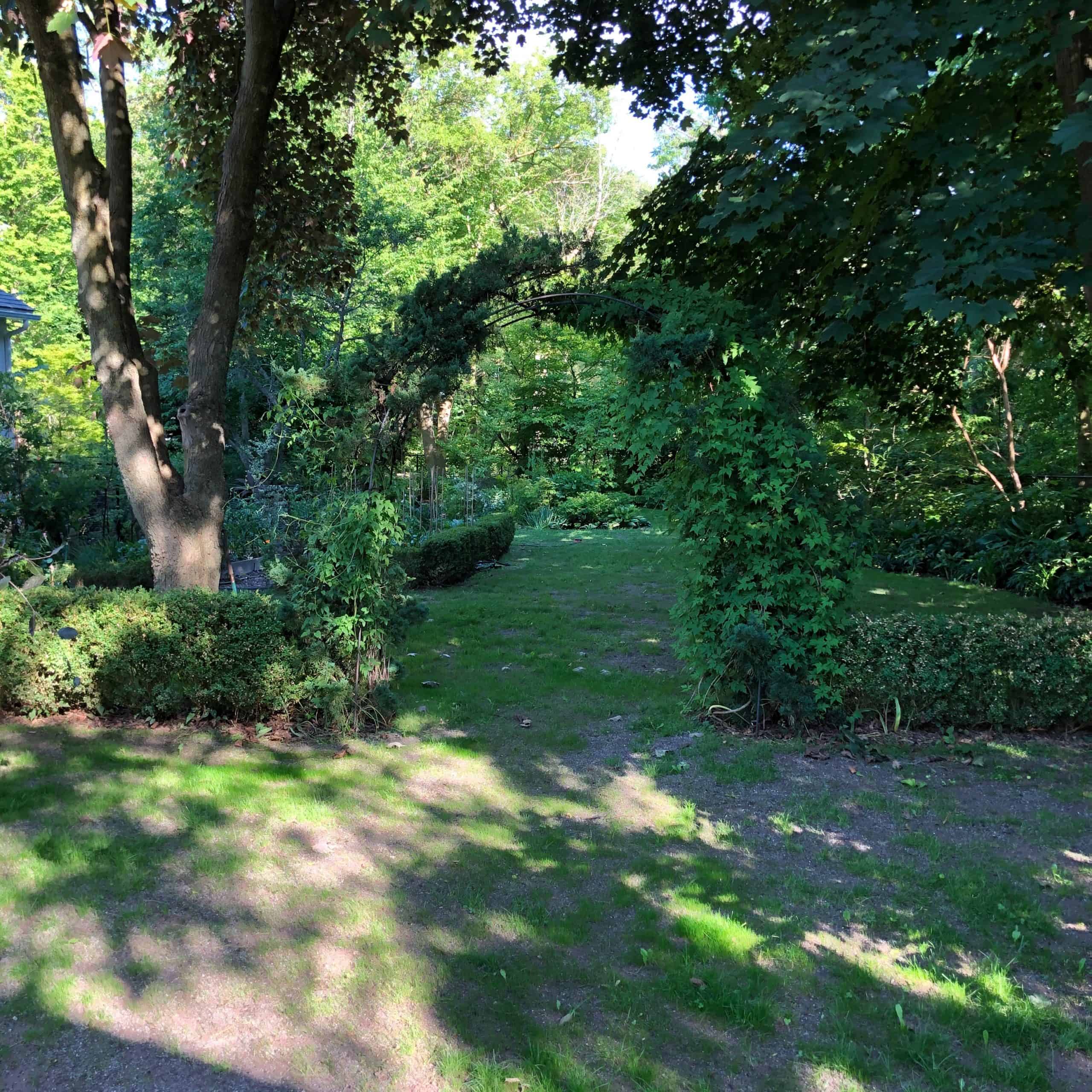Early spring is arguably the best time to renovate a lawn. Fresh lawn seed is available, temperatures are cool and you can usually count on spring showers to help germination. Early fall is the next best time. Summer is not optimal— it’s too hot and dry. Lawn seed needs to be kept moist while germinating and prefers cool temperatures.
Last spring, we decided to renovate our back lawn during the beginning of the pandemic and encountered an unexpected spring heat wave. Like so many things in life, timing is everything. If you’re planning to renovate your lawn this spring you might find my “Lessons learned while renovating a lawn” helpful. “Natural lawn care” has lots of information for lawn care throughout the growing season. If you’re seeding a new lawn, check out “How to seed a new lawn.”

More mayapples and maidenhair ferns, please
It’s always a treat to watch certain plants emerge in the spring. One of the most delightful is the clumps of mayapple (Podophyllum peltatum) that push their stubby fingers through the soil to then open up like small green umbrellas, shielding pristine white flowers underneath. The mayapple was a gift from a friend, which makes it extra special.
“Mayapple and maidenhair fern flourish in woodland garden” describes what growing conditions these two plants prefer. I wish I had as good luck with maidenhair fern as I do with mayapple.
Updates on companion planting
Companion planting, the practice of using specific plant combinations to deter pests, help pollination or provide other benefits in the garden, is often a debated topic. Is it folklore or fact? Plant Partners: Science-Based Companion Planting Strategies, a new book by Jessica Walliser, explains what works, what doesn’t — and most importantly, why.
Also tackling the subject is Charlie Nardozzi on The National Gardening Association’s recent post, “New Views on Companion Planting.”

How can we get rid of Bugleweed? HELP